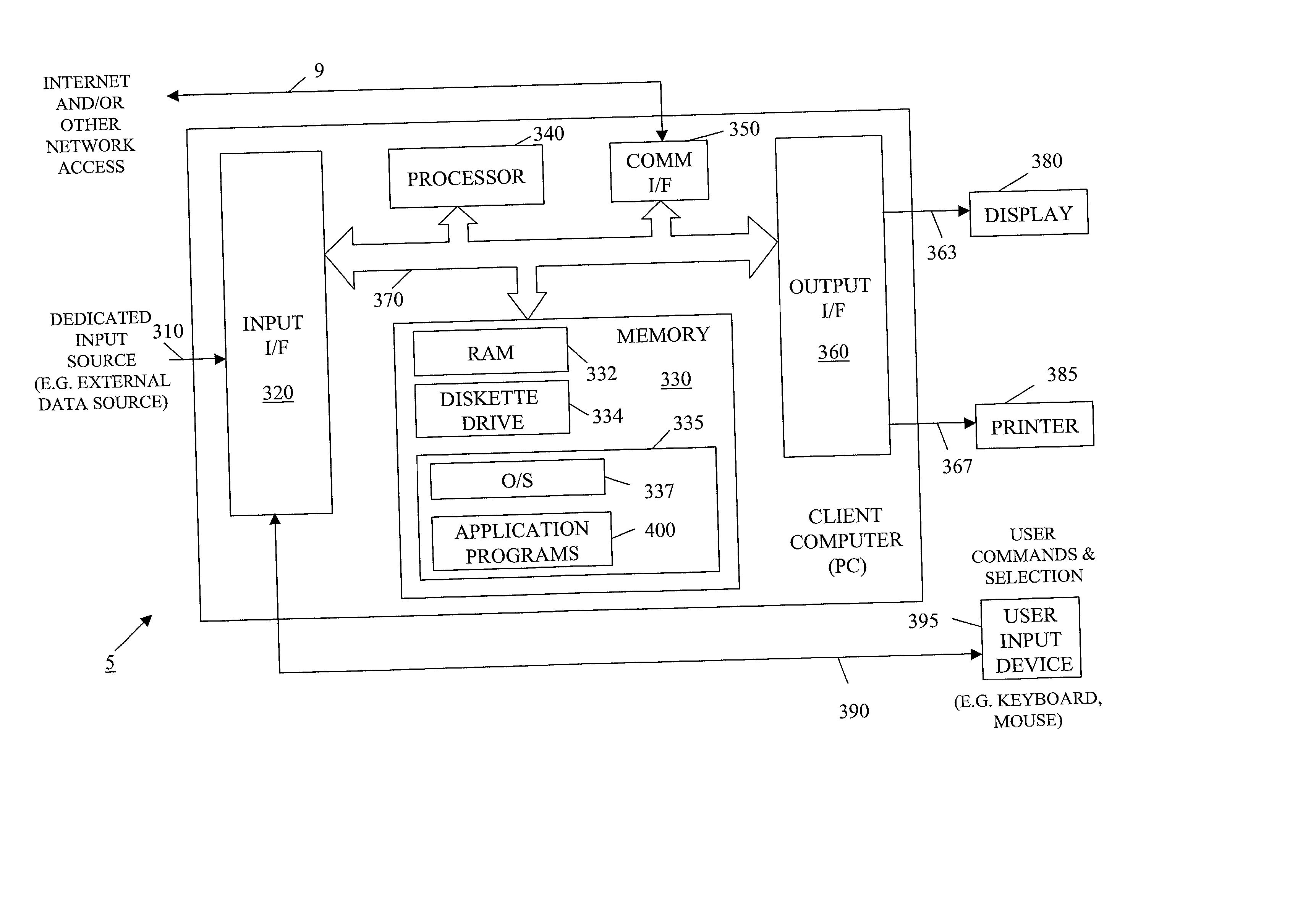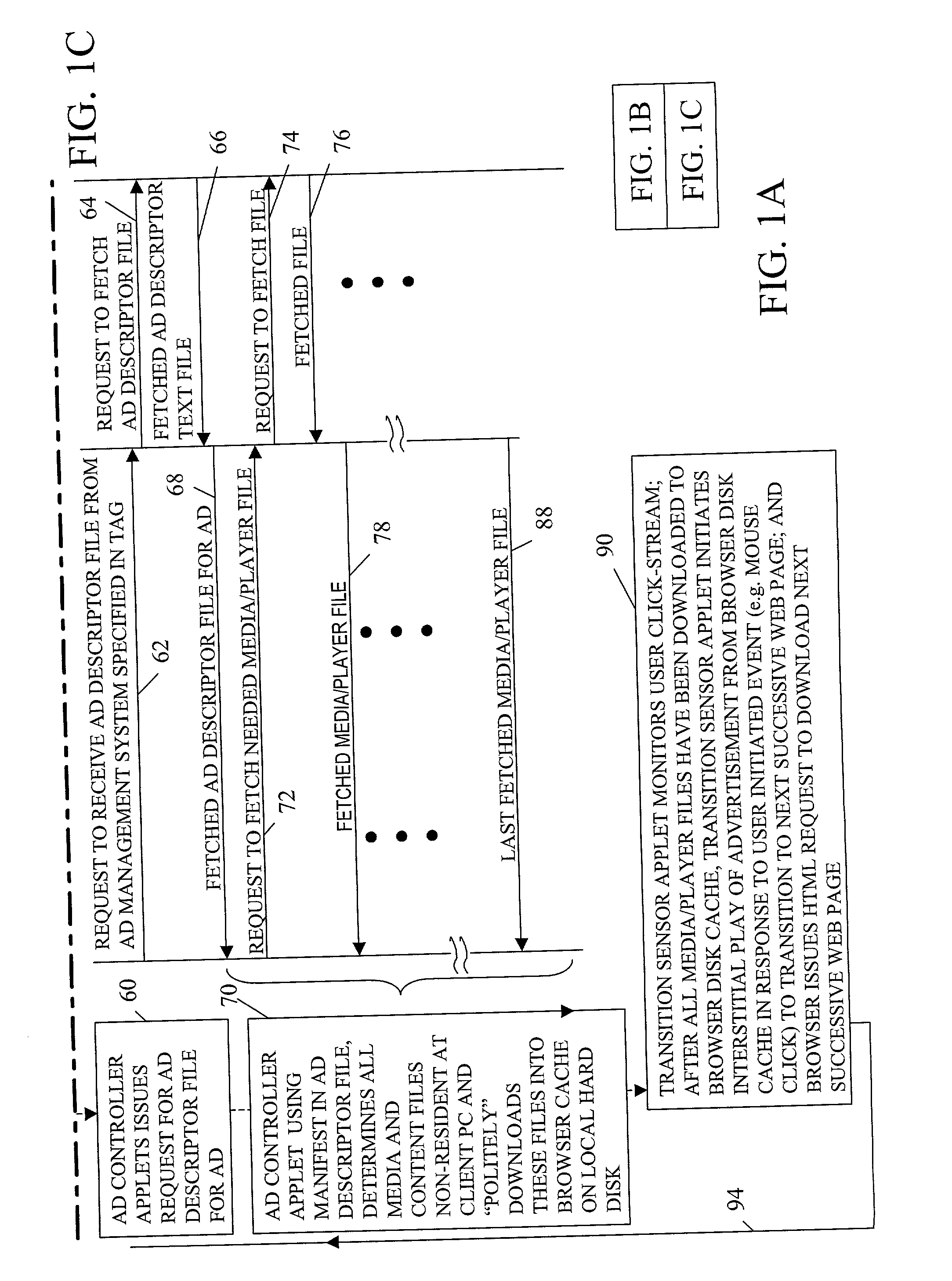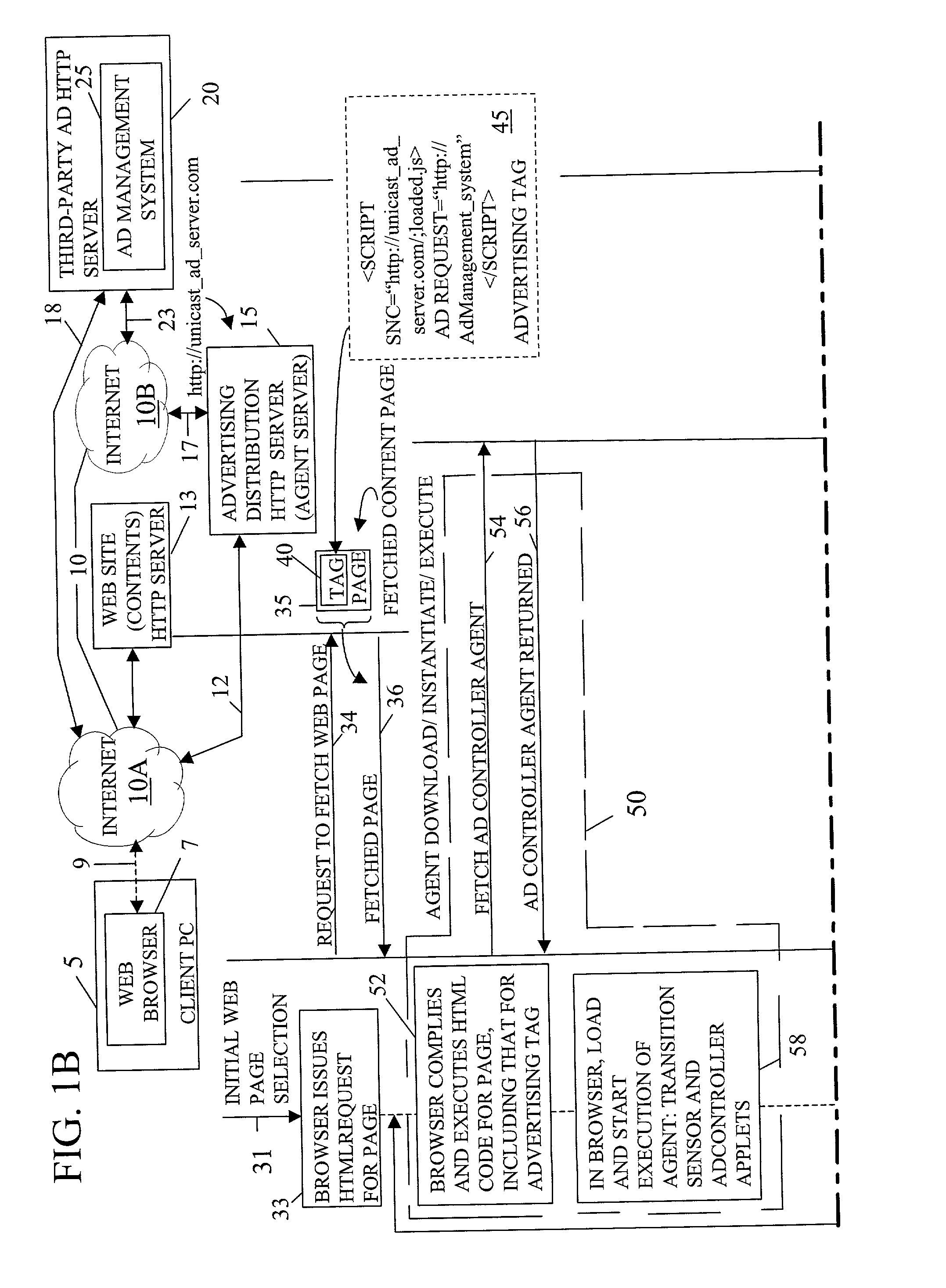The simplicity of browsing the web coupled with the relative low-cost of accessing
the Internet, and the relative ease through which a
web site can be established are collectively fueling unparalleled growth and
diffusion of
the Internet itself, web sites and the Internet user
community throughout the world.
In that regard, by establishing web sites, merchants, vendors and other
information providers have an unparalleled opportunity, basically unheard of as little as 5-10 years ago, to reach enormous numbers of potential consumers--regardless of where these consumers reside--at costs far less than previously thought possible.
While such diversion is relatively small at present, it is likely to rapidly grow.
This medium is likely to significantly challenge and possibly, over a relatively short time, may even alter traditional forms of retailing.
Unfortunately, conventional web-based advertising, for various practical reasons--some being technical in nature and others relating to a nature of traditional web advertisements themselves, has generally yielded unsatisfactory results and thus has usually been shunned by most large advertisers.
However, all suffer serious limitations of one form or another that have sharply restricted their desirability and use.
Channel bandwidth to a client computer (e.g.,
personal computer--PC), such as that provided through a modem connection, is often rather limited.
Consequently, if the
file size for the banner were relatively large--as would certainly be the case for relatively "rich" content, e.g., audio or video content, the
delay in downloading such a file over such a limited bandwidth connection could be excessive, and consequently highly frustrating to the user.
Hence, a user would likely wait a considerable amount of time before all the page components for
multimedia content are fully downloaded to permit that page to be rendered.
Such
delay, if encountered during a page transition, can be rather frustrating to a user, even to the point at which the user, just to end his(her) waiting, will prematurely terminate the download and transition to another page.
Unfortunately, such restricted file sizes effectively limit the richness of the content of a banner to a rather simplistic advertisement--even with
animation.
Thus, banners often failed, as advertisers soon recognized by relatively low click-through counts, to attract sufficient viewer attention to justify their use and expense.
However, interstitial advertisements, as conventionally implemented, have serious practical deficiencies which have severely limited their use.
Unfortunately, this approach, inherent in that taught by the Judson patents, can be inflexible and expensive for an advertiser to implement and particularly later should that advertiser, for whatever reason, seek to modify his(her) ad content.
Consequently,
insertion of increasingly sophisticated embedded advertising, such as multi-media or video or audio, in existing
web site content requires a large investment in terms of human resources, time and cost as web sites, particularly large sites, increase a number of content pages available for advertising.
In that regard, where a banner usually required
insertion of, e.g., a
single line of
HTML code, content rich advertisements, such as those now implemented by parameterized embedded
Java advertising applets, often consist of an entire page of coding and hence require far more extensive and increasingly labor-intensive and costly insertions.
However, once
HTML ad coding is embedded within a number of web pages, it can be quite impractical and rather costly for an advertiser to access each and every page in which his(her) ad coding has been inserted and then manually change the ad coding, as desired.
The impracticality and attendant cost compound if these pages are copied to other web sites and hence diffuse through the Internet.
While
push technology reduces download latency, by shifting downloads to occur at off-hours, this technology also suffers serious drawbacks which have greatly restricted its practical acceptance.
Unfortunately, these application programs can often extend to tens of megabytes in length.
Since typical
Internet users establish modem connections to their
Internet service providers, these users will find that downloading these relatively large program files, even in compressed form, will consume an inordinate amount of time and is generally impractical while (s)he is actively using his(her) client PC.
This content, depending on its volume, can consume inordinate amounts of hard
disk space.
Furthermore, advertisers have discovered, not surprisingly, that relatively few PC users will undertake any affirmative action, such as by downloading and installing an application program--almost regardless of its size, to receive advertisements and other such information.
Faced with these practical, and rather acute, deficiencies inhering in web advertising conventionally provided on either an interstitial or "push" basis, web advertisers have apparently relegated their efforts to displaying their advertisements on a banner-like approach, through real-time downloading and rendering of advertising HTML files.
Unfortunately, any network or
server congestion which stops the download, even if temporary, can suspend, i.e., freeze, or totally halt the "streamed" media presentation to the user prior to its completion.
This interruption, if noticeable and sufficiently long, will likely frustrate the user and degrade the "user experience".
In
spite of these drawbacks, particularly with respect to interstitial advertisements and
push technology, and apparently for lack of a better alternative, most web advertising currently in use employs real-time streaming of graphic files with their content being rendered by the browser.
But with web advertisements, accurately ascertaining that number has been difficult and problematic at best, and, given a basic technique employed to do so, manifestly error-prone, thereby causing unreliable user counts and erroneous ad charges.
Unfortunately, serving these ad files does not guarantee that these files will be ultimately and completely rendered by a client browser to a user.
Consequently,
web server generated "user impression" counts can be grossly-over-or under-stated.
For example, if a user navigates to a new
content page after an advertisement has started playing but before that advertisement completes and, by doing so, prematurely terminated the advertisement, a full impression is nevertheless logged--erroneously--since that advertisement was completely served.
Inasmuch as some intranets situated behind a
proxy server(s) can be rather extensive with tens or hundreds of thousands of individual client PCs, server-based user impression accounting based on copies delivered by a web server may, owing to the presence of proxy servers, be inordinately low and result in significant under-charges to the advertiser.
As of yet, no solution apparently exists in the art that can provide accurate counts of "user impressions" of web advertisements.
These approaches, most notably involving the
Java and
JavaScript programming languages, while helpful, still cause inefficient use of available link bandwidth and still constrain the size of the content files.
These limitations arise from premature terminations of preloaded files whenever a user transitions to a new web page.
Hence, the time and bandwidth that has then been expended in downloading part of that ad file is completely wasted.
Therefore, these approaches have generally proven to be wholly unsatisfactory.
Yet, the limitations inherent in conventional implementations of interstitial advertising have effectively prevented this form of web advertising from effectively fulfilling its promise.
Moreover, the deficiencies inherent in all known web advertising techniques have, to a significant extent, collectively inhibited the use of web advertising in general.
 Login to View More
Login to View More  Login to View More
Login to View More 


